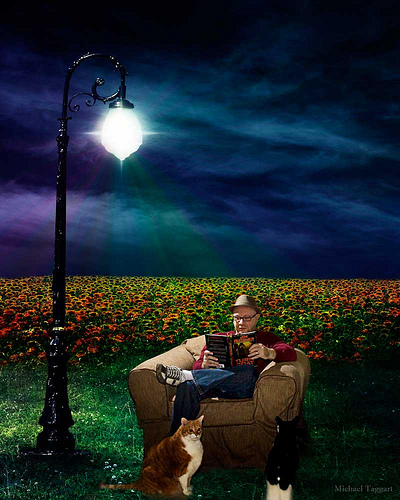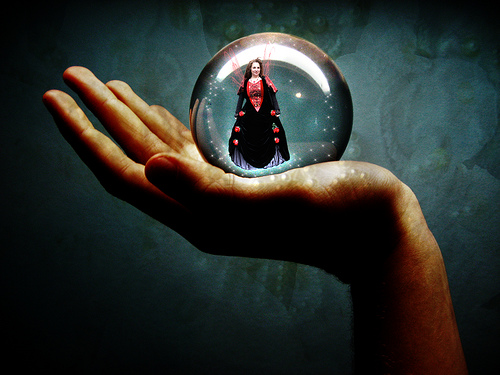3 Ways Great Nonfiction Can Be the Fiction Writer’s Greatest Resource
Today’s guest post is from author Daryl Rothman:
There’s nothing like good fiction. Never am I more inspired to write something good than immediately after reading something good. But a funny thing has happened along the way.
My best writing, the greatest surges of fiction/writing inspiration, occurred after reading great nonfiction. Not only was it inspiring me, it was making me write better. But why? And how can it help your writing too?
Creative nonfiction is the fastest-growing genre in the literary world and refers to a writing style usually associated with fiction or poetry to report on actual persons, places, or events. I primarily pen fiction, and concur it is “a world of freedom,” but this for me can be a blessing and a curse, and which elicits at times a corresponding excess in my prose.
Enter Creative Nonfiction
Great nonfiction writers extract from an unalterable history a tale all their own. They make nonfiction as compelling as fiction, and I often find myself wishing I could make my fiction as compelling as their nonfiction. But what are those traits that have become indispensable tools in the crafting of my best work?
Great Characters. Great nonfiction builds upon exacting research and artful presentation to deliver great characters. Erik Larson’s Thunderstruck tells the story “of two men—Hawley Crippen, a very unlikely murderer, and Guglielmo Marconi, the obsessive creator of a seemingly supernatural means of communication—whose lives intersect during one of the greatest criminal chases of all time.” I knew nothing at all of Crippen (despite my fascination with the Ripper murders, to which aspects of Crippen’s saga would ultimately draw comparisons) and little of Marconi. Larson writes:
Another man might have decided the physicists were right—that long-range communication was impossible. But Marconi saw no limits. He fell back on trial and error, at a level of intensity that verged on obsession.
Informative, but also seasoned with key ingredients as to the recipe of Marconi’s character. The “information” Larson presents presages so much of what is to come. Great nonfiction is powered by a foundation of truth—and elevated by great storytelling. The result is fantastic—a story possessing the greatest virtues of fiction and nonfiction alike: the depth of character and skilled narrative of the former, and the inevitable restraint and clarity of the latter.
And the lessons for fiction writers are tangible. Just as good nonfiction is anchored upon a foundation of spare, informational prose but expands into compelling story, good fiction maintains its foundation of riveting story and characters while refraining from excess.
Setting the Stage. Not only does great nonfiction present compelling characters, it also animates the life and times and world in which they live. We are given sufficient detail to see this world, but not so much as to be blinded by it and lose focus on story and character.
As Marconi takes his wireless pursuits to new heights—literally—Larson describes a scene atop the towering Oceanside cliffs of Cape Cod.
Next Cook led him a few miles south to a parcel of land just outside South Wellfleet, consisting of eight acres atop a 130-foot cliff which overlooked the same beach along which Thoreau had walked half a century earlier. Buffeted by wind, now Marconi walked the ground. The land in all directions had been shaved to a stubble by gales and by loggers who over the previous century had stripped it to provide lumber for ship-builders . . . If he stood facing east, all he saw was the great spread of the Atlantic. As Thoreau observed, “There was nothing but that savage ocean between us and Europe.”
That elusive balance: we are not merely told that Marconi and his men have journeyed to the top of a cliff. We know where, see where, and we know why (he is continuing his relentless pursuit of wireless, and hoping this location will finally bring success).
What about Thoreau? Is he directly relevant to Marconi’s story? Not really. But it evokes a sense of the gravity with which the moment was freighted for Marconi. Its inclusion retains fidelity to fact (Thoreau really did traverse that stretch of land, and really did say that of the Atlantic), but also elevates the storytelling.
Fiction authors: paint a vivid picture by presenting the “facts,” then invigorate it with deft, but still restrained, touches.
As we begin to know Crippen, we also begin to see the world in which he lives, the backdrop against which his unthinkable crime shall be committed.
But these fears and pressures existed as background tremolo, audible mainly to the writers, journalists and reformers who made it their business to listen. . . . The Metropolitan Police, known more commonly as Scotland Yard, had grown larger and moved to new headquarters . . . while excavating its foundation, in the midst of the terror raised by Jack the Ripper, workers had found the torso of a woman, without head, arms or legs, triggering fears that this too had been Jack’s work.
Once more Larson has maintained literary equilibrium: fidelity to truth and fact, yet a leveraging of said truth in a manner that heightens tension and instills in the reader a greater feel for the time.
Seek a similar balance. Build tension and evoke the backdrop and subplots of your tale. But restrain your narrative with “truth.” Not real truth, mind you, for you write fiction—but with the truth of your character, your story.
Fresh Angles. Near the climax, Larson relays a most extraordinary moment, when murderer and now fugitive Crippen is discovered by the ship’s captain listening in fascination to the “electric crackle” of the Marconi equipment on the ship’s deck.
Crippen turned to him and exclaimed, ‘What a wonderful invention it is!’ Kendall could only smile and agree.
Early in the book we learn that the stories are indeed on a collision course.
Within twenty-four hours Captain Kendall would discover that his ship had become the most vessel afloat and that he himself had become the subject of breakfast conversation from Broadway in New York to Piccadilly in London. He had stepped into the intersection of two wildly disparate stories, whose collision on his ship in this time, the end of the Edwardian era, would exert influence on the world for the century to come.
If it is true that “there is nothing new under the sun,” that entirely original story lines are difficult to come by, fret not—you may and you must still pursue avenues of ingenuity. A different point of view. New voices. A fresh angle. Artfully interweave storylines; make them collide.
Peruse examples of good nonfiction; there is an ample trove from which to sample. See if they can bolster your own writing. I wager they will, but if not, you’ll have at least enjoyed some good reading (how doing so does not bolster one’s writing, I do not confess to know).
So what do you think? Is leaning on nonfiction to aid fiction writing a crazy idea? Please share your thoughts in comments. Best wishes!
 Daryl Rothman is a father, author and early childhood leader. His website features his blog, short stories, publications, guest interviews, and news about his novels, and he has guest-blogged for other authors and publications. From early in life he harbored three aspirations: become a father, become a writer, and become a ballplayer for his hometown Cardinals. He is blessed to have achieved the first, is happily continuing his journey regarding the second and he will neither confirm nor deny holding out hope for the third. Connect with him here on LinkedIn
Daryl Rothman is a father, author and early childhood leader. His website features his blog, short stories, publications, guest interviews, and news about his novels, and he has guest-blogged for other authors and publications. From early in life he harbored three aspirations: become a father, become a writer, and become a ballplayer for his hometown Cardinals. He is blessed to have achieved the first, is happily continuing his journey regarding the second and he will neither confirm nor deny holding out hope for the third. Connect with him here on LinkedIn
Featured Photo Credit: Michael Taggart Photography via Compfight cc












I know I’ve dabbled a bit in this, just from the historical quirks of our ancestors in Greek and Rome. There are some crazy things they did, and they can at least add to the atmosphere of the piece, if not inspire some interesting spins on fiction itself.
Of course, this is negated when you’re reading non-fiction about fiction writing. The paradox is rather ironic.
But yes, I can support this method and it can come in handy.
Thanks Matthew, ironic indeed. But I’m glad you find some merit in it overall. Thanks for commenting and best wishes!
This article reminds of the advice “read broadly.” It’s so true that you can learn from other genres. The more tools and concepts you pick up, the more you can challenge yourself to be a better writer. Thanks for the post, Daryl.
Thanks M.J., well-said and that’s good advice! Thanks for reading!
Very interesting points you make here. I agree with everything you say.
Thanks Susannah! I’m glad it was useful.Are you more into fiction or nonfiction or a mix? Best wishes!
As a non-fiction writer, I quite enjoyed this intriguing post, Daryl. Thank you. Hopefully my forthcoming book will similarly inspire many a fiction writer; I suspect it has the potential to do so.
Cheers.
Thanks, Michael, really glad to hear you enjoyed it, and congrats on the forthcoming book. I’m sure it will inspire fiction scribes. Best wishes!
Appreciate the kind wishes, Daryl. Best of luck with your work, too. Cheers!
Nothing like a well told true story! I’m glad creative nonfiction has taken its certifiable seat as a genre. Has the best of both world–the storytelling and literary elements of fiction and even poetry and the stuff of life of nonfiction. Thanks for the post.
Thanks Marcia, I very much concur!
Enjoyed this post. Got me thinking bout characters whose real-life stories would make great reading when written with some imagination.
Christine, thank you, glad it stirred some of those ruminations. Who are some of the characters you’re musing about?
Hi Daryl. Good post.
Non-fiction was my source of inspiration for my first published historical novel (“The Poor Preachers”.) The more I researched the activities of John Wycliffe and his followers, the more those creative juices began to flow in my head (and heart.)
I particularly got a kick out of discovering some related fact or background triviality of the time and incorporating it into my story.
Interesting to note the range of approaches to historical fiction. At one end of the continuum is the Hollywood style, where the Facts are never allowed to get in the way of a Good Story. At the other end is the Docu-drama approach which is the result of intensive research. I guess my novel is at the right-of-centre of the continuum, since I haven’t the resources to do an exhaustively faithful account of my main characters and their activities.
I’d be interested in your thoughts on this.
David congrats on the novel and I relate to that “middle-ground” which you reference. I also love some of the spin-off or ancillary research and tidbits engendered by the process…but I also am not equipped to conduct full-throttle research, sadly. So I think an approach which is honest in its intentions is absolutely fine and can–like anything–make for great reading when well-executed.
Thanks and best wishes!
Daryl, I very much enjoyed your article. I also appreciated David Butler’s comment above. I am a non-fiction ghostwriter and ironically I learned more about what my genre is in an abstract sense from your post. You raised some of the tools of non-fiction writing from an unconscious level to the conscious. “Oh, so that’s what I’ve been doing! How Cool!” My work always involves huge amounts of research. I am on my fourth book, and on average I have read/studied/annotated 42 books in the preparation stage for each of mine, without mentioning the thousands of pages online. There is a danger in learning so much background information that your writing becomes stilted, stiff, wooden. Your article was a much appreciated reminder never to neglect the storytelling that makes the facts both palatable and meaningful to my readers.